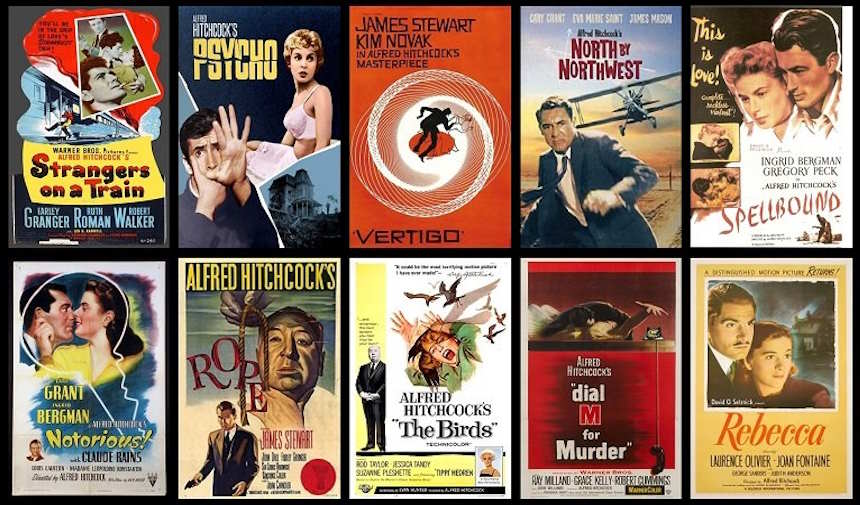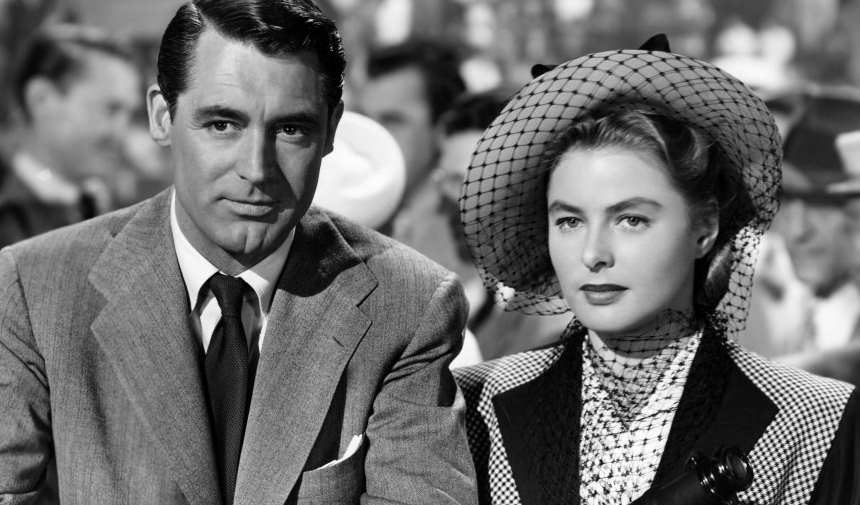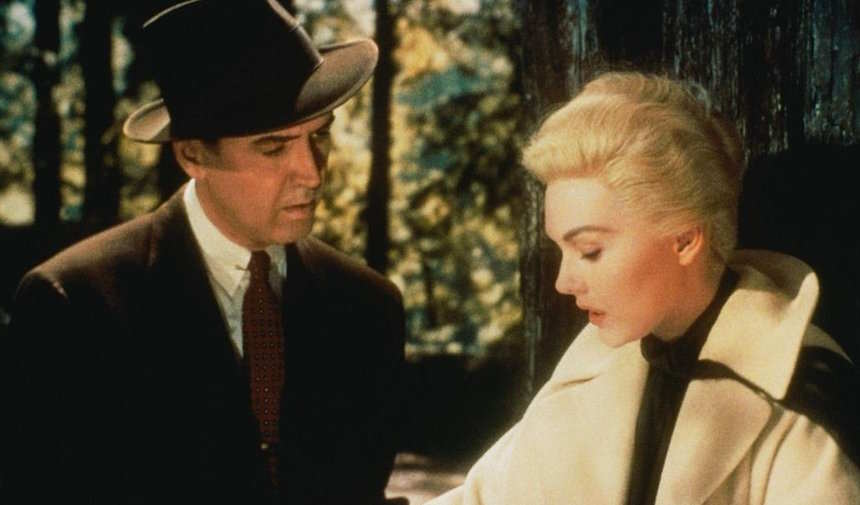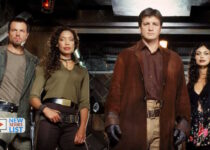Alfred Hitchcock Movies in Order of Release List by Year
Understanding Alfred Hitchcock movies in order of release is essential, if you’re an avid film enthusiast or simply someone who appreciates the art of cinema. Known as the master of suspense, Hitchcock’s films have left an indelible mark on the world of filmmaking. By watching his movies in chronological order, you can witness the evolution of his storytelling techniques, directorial style, and thematic explorations.
From early masterpieces like “The 39 Steps” to iconic classics such as “Psycho” and “Vertigo,” each film offers a unique glimpse into Hitchcock’s genius. Delving into his best works not only provides entertainment but also a deeper appreciation for one of cinema’s greatest directors.
Alfred Hitchcock Movies in Order of Release List by Year

Alfred Hitchcock’s films are often hailed as some of the best in cinematic history, and for good reason. Known as the “Master of Suspense,” Hitchcock expertly crafted narratives that keep audiences on the edge of their seats, blending psychological depth with innovative visual techniques.
Movies like “Psycho” and “Rear Window” are quintessential examples of his genius, each offering a masterclass in tension-building and storytelling. “Vertigo,” another standout, delves into themes of obsession and identity with a complexity that continues to captivate viewers decades after its release.
Hitchcock’s meticulous attention to detail, from his iconic use of camera angles to his pioneering editing techniques, sets his work apart from other filmmakers. By consistently pushing the boundaries of genre and form, Alfred Hitchcock has cemented his legacy as a filmmaker whose movies not only entertain but also provoke thought and discussion long after the credits roll.
Alfred Hitchcock Filmography

When it comes to the world of cinema, few names resonate as powerfully as Alfred Hitchcock. Known as the “master of suspense,” Hitchcock’s filmography is a treasure trove of iconic movies that have left an indelible mark on the industry. From his early British works to his Hollywood masterpieces, Hitchcock’s storytelling prowess and innovative techniques have cemented his status as a legendary director.
Consider “Psycho,” a film that redefined the horror genre with its shocking twists and unforgettable score. Or “Vertigo,” often hailed as one of the greatest films ever made, which delves deep into themes of obsession and identity. Then there’s “Rear Window,” where Hitchcock masterfully builds tension through a confined setting, turning an ordinary apartment complex into a hotbed of intrigue.
Each Alfred Hitchcock film is not just a movie; it’s an experience that keeps you on the edge of your seat. His ability to manipulate audience emotions and expectations makes every viewing a gripping journey. For anyone passionate about cinema, exploring Hitchcock’s filmography is not just recommended—it’s essential.
The Early Years: Alfred Hitchcock’s Formative Films (1920s-1930s)
Alfred Hitchcock, often hailed as the Master of Suspense, had a remarkable journey that began long before his Hollywood masterpieces. His formative years in the 1920s and 1930s were instrumental in shaping his unique style and vision. During this period, Hitchcock created a series of silent films and early sound movies that laid the groundwork for his legendary career.
In the 1920s, British cinema was burgeoning with creativity and innovation. It was within this vibrant landscape that Hitchcock made his directorial debut with “The Pleasure Garden” (1925). Despite being a silent film, it showcased his early knack for visual storytelling and suspenseful narratives. The success of this film paved the way for subsequent projects such as “The Lodger: A Story of the London Fog” (1927), which many consider to be his first true thriller.
As sound technology revolutionized filmmaking in the late 1920s, Hitchcock seamlessly transitioned into talkies. His early sound films like “Blackmail” (1929) demonstrated not only his adaptability but also his pioneering use of sound to enhance tension and atmosphere. This period also saw him delve deeper into complex characters and psychological themes—a hallmark of later Hitchcockian cinema.
Throughout the 1930s, Hitchcock continued to refine his craft with notable works such as “The Man Who Knew Too Much” (1934) and “The 39 Steps” (1935). These films cemented his reputation in British cinema and showcased elements that would become synonymous with his name: meticulous plotting, suspenseful pacing, and innovative camera techniques.
Understanding these early Hitchcock works is crucial for appreciating how he evolved into one of cinema’s greatest directors. They are not just historical footnotes but essential chapters in a career defined by relentless innovation and an unerring eye for detail. For anyone passionate about film history or simply looking to understand what makes great cinema tick, exploring Alfred Hitchcock’s formative years is an enlightening journey into the origins of suspense itself.
The Transition to Hollywood: Key Works from the 1940s
The 1940s marked a pivotal era in the evolution of Hollywood, with a wealth of groundbreaking films that continue to influence contemporary cinema. This decade saw the Hollywood debut of numerous iconic directors and actors who would go on to define classic Hollywood films. A significant aspect of this period was wartime cinema, which not only entertained but also served as a powerful tool for propaganda and morale-boosting during World War II.
One cannot discuss the 1940s without mentioning Alfred Hitchcock’s American era. Having established himself in Britain, Hitchcock made his move to Hollywood, where he created some of his most memorable works. Films like “Rebecca” (1940) and “Notorious” (1946) are prime examples of his genius during this time, blending suspense with intricate storytelling to captivate audiences.
In conclusion, the transition to Hollywood in the 1940s was marked by key works that have left an indelible mark on film history. From wartime cinema’s impact on public consciousness to Hitchcock’s masterful American era contributions, this decade laid down the foundation for what we now recognize as classic Hollywood films.
The Golden Age: Must-Watch Films from the 1950s

The 1950s marked the golden age of cinema, a transformative period that brought forth some of the most iconic films in history. Among these cinematic treasures, Alfred Hitchcock movies stand out as masterpieces that continue to captivate audiences with their suspenseful storytelling and psychological depth.
Hitchcock’s genius is evident in classics like “Rear Window” and “Vertigo,” which are quintessential examples of suspense thrillers from this era. “Rear Window” immerses viewers into a voyeuristic world where every glance through the lens reveals more than meets the eye, while “Vertigo” delves into the complexities of obsession and identity, making it a hallmark psychological drama.
Beyond Hitchcock, the 1950s offered a plethora of must-watch films that defined genres and set new standards for storytelling. Movies like “Sunset Boulevard,” with its haunting portrayal of faded Hollywood glory, or “12 Angry Men,” an intense courtroom drama that explores themes of justice and morality, showcase the diverse range of narratives that flourished during this decade.
These iconic 1950s movies are not just relics of the past; they are timeless pieces that continue to influence modern cinema. They offer invaluable insights into human nature and societal issues, wrapped in compelling plots and unforgettable performances. Embracing these films means stepping into an era where creativity knew no bounds—a true golden age worth revisiting time and again.
The Master Strikes Again: Essential Hits from the 1960s and Beyond
When discussing the pantheon of cinematic legends, Alfred Hitchcock’s name invariably rises to the top. His mastery over suspense and psychological intrigue has left an indelible mark on the film industry, particularly through his essential hits from the 1960s and beyond. These late career masterpieces not only solidified his legacy but also influenced countless filmmakers in the ’60s and ’70s.
One cannot overlook “Psycho” (1960), a groundbreaking thriller that redefined horror with its shocking narrative twists and unforgettable characters. This film alone showcases Hitchcock’s unparalleled ability to manipulate audience expectations, making it a cornerstone of 1960s thrillers.
Following “Psycho,” Hitchcock continued to deliver influential films like “The Birds” (1963). This apocalyptic tale of nature gone awry remains a testament to his innovative use of special effects and sound design, creating an atmosphere of palpable tension that still resonates today.
Another gem from this era is “Marnie” (1964), a psychological thriller that delves deep into themes of trauma and identity. It’s a prime example of Hitchcock’s skill in blending complex character studies with gripping narratives, proving that his creativity was far from waning in his later years.
These films are not just relics of their time; they are timeless pieces that continue to inspire modern cinema. The influence of Alfred Hitchcock movies can be seen in contemporary thrillers, demonstrating how these late career masterpieces have become essential viewing for anyone serious about understanding the evolution of film as an art form.
In summary, Alfred Hitchcock’s contributions during the 1960s and beyond are nothing short of monumental. His films from this period remain influential touchstones that have shaped the landscape of modern cinema, ensuring that the Master continues to strike again with every new generation of filmmakers he inspires.
A Complete List of Alfred Hitchcock Movies in Order of Release by Year
If you’re a cinephile or simply someone who appreciates the art of filmmaking, delving into the works of Alfred Hitchcock is an absolute must. His detailed filmography, meticulously organized by year in chronological order, offers a fascinating journey through the evolution of his directorial prowess. From his early silent films to his later masterpieces that redefined the thriller genre, each entry in his career is a testament to his unparalleled skill and innovation.
1. The Pleasure Garden (1925)
2. The Mountain Eagle (1926)
3. The Lodger: A Story of the London Fog (1927)
4. Downhill (1927)
5. Easy Virtue (1928)
6. The Ring (1928)
7. Champagne (1928)
8. The Farmer’s Wife (1928)
9. Blackmail (1929)
10. Juno and the Paycock (1930)
11. Murder! (1930)
12. The Skin Game (1931)
13. Rich and Strange (1931)
14. Number Seventeen (1932)
15. The Man Who Knew Too Much (1934)
16. The 39 Steps (1935)
17. Secret Agent (1936)
18. Sabotage (1936)
19. Young and Innocent (1937)
20. The Lady Vanishes (1938)
21. Jamaica Inn (1939)
22. Rebecca (1940)
23. Foreign Correspondent (1940)
24. Mr. & Mrs. Smith (1941)
25. Suspicion (1941)
26. Saboteur (1942)
27. Shadow of a Doubt (1943)
28. Lifeboat (1944)
29. Spellbound (1945)
30. Notorious (1946)
31. The Paradine Case (1947)
32. Rope (1948)
33. Under Capricorn (1949)
34. Stage Fright (1950)
35. Strangers on a Train (1951)
36. I Confess (1953)
37. Dial M for Murder (1954)
38. Rear Window (1954)
39. To Catch a Thief (1955)
40. The Trouble with Harry (1955)
41. The Man Who Knew Too Much [Remake] (1956)
42. The Wrong Man (1956)
43. Vertigo (1958)
44. North by Northwest (1959)
45. Psycho (1960)
46. The Birds (1963)
47. Marnie (1964)
48. Torn Curtain (1966)
49. Topaz(1969)
50 Family Plot(1976)


